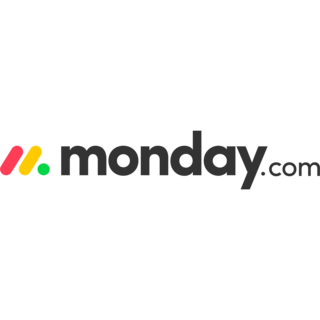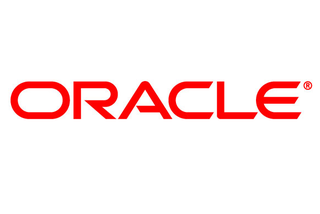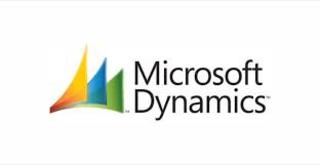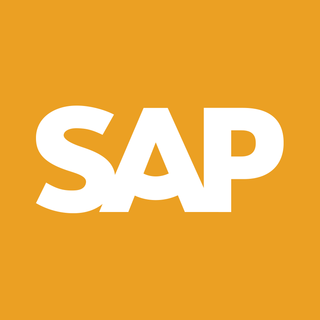Best ERP Software
Anyone who's worked for a big corporation knows it's not so much one cohesive whole and more a series of petty fiefdoms. Enterprise Resource Planning (ERP) software exists to knit together those fiefdoms, subjugate the ruling director class and slay the dragon tormenting the HR department (okay, maybe we took that metaphor a little too far, but you get the gist).
ERP software has been around for decades, but the advent of cloud computing and software as a service (SaaS) has broadened its appeal and capabilities while lowering its overall costs. Today, you'll be hard-pressed to find an enterprise-level company that doesn't make use of the software. Even many small and medium-sized businesses have gotten in on the action.
To help you select the right system for your needs, we've put together a list of the five best ERP software systems on the market today. Learn about what makes each system unique, plus their pros, cons and stand-out features.
Our Top Picks For Best ERP Software
- Monday.com – Best for Small Businesses
- Oracle NetSuite – Best for Midsize Businesses
- Microsoft Dynamics 365 – Best Cloud-Based ERP System
- SAP ERP – Best Free Trial
- Vault ERP – Best for Business Growth
Best ERP Software Reviews
Why we chose it: Monday.com's affordable pricing, intuitive user interface (UI), shareability and top-notch project management features make it a solid fit for small businesses.
Monday.com stands out for its remarkable affordability. At the lower end, you can take advantage of its free forever plan, which offers up to two seats, three boards, unlimited shared document collaboration and up to half a gigabyte of storage.
Its four paid plans include:
- Basic: $8 a month per user
- Standard: $10 a month per user
- Pro: $16 a month per user
- Enterprise: Call in for a custom price quote
As you move up the pricing ladder, you gain access to additional features, storage, automation tools, integrations and security measures. Monday.com never quite approaches the same level of functionality and deep integration offered by an enterprise-level software system. However, for a business with a low annual turnover and just a few employees, this ERP software should be more than enough to cover your bases.
Project management features are where Monday.com really shines. The platform lets you create detailed workflows, schedule employees and track time spent on tasks, while its at-a-glance dashboard features allow you quickly access information from different parts of the company in one central hub. Monday.com also offers various analytic tools for enhancing overall efficiency, and it integrates with various third-party platforms, including Slack, Gmail and Mailchimp.
Monday.com boasts an intuitive user interface (UI) design. You won't need a degree in computer science to set up your business thanks to an array of customizable templates and online tutorial features. This makes Monday.com an excellent choice for companies that do not have a dedicated IT department.
One downside is that the company's Contact Us webpage says it offers 24/7 support but does not list a customer support phone number. Instead, you have to fill out an information form with the nature of your problem and your personal information, including your name, work email and phone number.
- No limit to the number of users
- Free trial available
- Comes with an integrated mobile app
- Supports more than 190 currencies
- Not particularly affordable
- Complex UI makes for a steep learning curve
- Deployment may require hiring a dedicated integration team
Why we chose it: Oracle's NetSuite ERP system provides a robust, all-in-one platform that's well-suited for midsize businesses looking to enhance operational efficiency and scale.
The NetSuite ERP is a cloud-based software system with a full range of features, including billing management tools, financial planning and growth projections. Oracle offers multiple iterations of its platform that vary by industry type. Moreover, you can customize your product to focus on the tasks that matter most for your business's success.
Oracle also offers top-notch customer support. In addition to its library of helpful educational resources, Oracle maintains a live chatbot, email support and a 24/7 hotline for subscribers. User reviews taken from trusted third-party platforms suggest many customers enjoy the platform's customizability and deep functionality.
However, all of this customizability comes at a cost: Oracle NetSuite suffers from a steep learning curve. Don't expect to get a handle on the software after watching a few video tutorials. NetSuite isn't the most affordable option out there, either. Its monthly subscription costs can easily run into the hundreds or thousands of dollars, and unlike simpler programs, you won't be able to deploy the system yourself. While Oracle doesn't publish its implementation pricing, online estimates run from the thousands to tens of thousands of dollars.
Why we chose it: Built on its Azure cloud services network, Microsoft Dynamics 365 offers a comprehensive suite of business tools best suited for midsize to enterprise-level businesses.
Microsoft Dynamics 365 brings much of the same look and feel as other popular Microsoft software products, making for an intuitive and familiar UI. As expected, Dynamics integrates seamlessly with other Microsoft products. If your business relies on these, you shouldn't have too hard of a time making the switch. Still, businesses that depend on third-party software tools should verify that they'll be able to integrate their existing processes with Dynamics.
Microsoft Dynamics 365 is based on a series of modules that must be bought independently from one another. Each module encompasses a single "vertical," which means you'll have to purchase your marketing, sales, accounting, CRM and other department-specific software a la carte. The price per module can vary widely from $20 per user to $1800 per user.
Although module-based structure allows for an added layer of customization, businesses past a certain size may find this a frustrating layer of added complexity. And while the software itself runs toward the cheaper size, implementation is notoriously expensive. You also have to purchase support for whatever software package you choose.
With so many modules and plan tiers available, pricing out the total cost your company can expect to pay may take a while. Most plans are priced per user, although its marketing plans are priced per tenant or the business buying the software.
- Comprehensive features touch on every aspect of running a business
- 30-day free trial
- Automation features available
- Available on-premises or via cloud-based servers
- Poor UI design makes navigation a chore
- Expensive compared to similar software
- Long and complex implementation
- Occasional performance issues
Why we chose it: SAP lets you try its ERP software for a full 30 days — plenty of time to try out all of its features — to decide if it's the right software solution for your business.
As with many of the more sophisticated ERP systems out there, it can take some time to wrap your head around SAP's pricing structure. Prices vary by plan and product, and SAP charges separately by module, with the total cost consisting of a base price plus an additional cost for each user. You can also expect to pay a hefty price for installation. However, in exchange for its high price point, you get a wide array of helpful features.
These include:
- Real-time access to data related to pricing, products, customers and contracts
- Regulatory compliance features
- Accounting automation
- Human resource data centralization
- Information on systems and equipment held at customer locations
- 24/7/365 phone support with dedicated customer service lines in 117 countries
- Expert support and peer chat on SAP's website
This wide array of features is one of the primary drivers behind the software's high levels of user satisfaction. Customer ratings for SAP ERP taken from trusted third-party platforms are generally positive, with praise going largely to its impact on their bottom line and its extensive range of features. Negative reviews center on the software's high cost, complicated implementation and unpleasant UI design. Some reviews mentioned occasional lag times when using the software.
Speaking of UI, SAP's holds a high learning curve. The software can be unintuitive and represent significant navigation difficulties at first glance. These issues will go away with sufficient time and training, but they represent a significant entry barrier nonetheless.
Why we chose it: Vault ERP takes the module business structure to the next level with a wide array of mix-and-match modules and granularly defined verticals that make scaling up a cinch.
With Vault, you can choose from a comprehensive range of modules — there are currently 35 separate modules on its website — each one helpfully nested under a header describing its vertical. These modules can get quite granular. For example, its time-tracking module lets you create schedules and accurate project estimates, while the invoices module lets you exchange, process and manage invoices.
Vault advertises the following plan options on its website:
- Starter Package: Best suited for smaller companies, this plan starts at $450/month.
- Premium Package: This plan is made for midsize businesses with complex needs. It weighs in at $1,050/month.
- Enterprise Package: Built for enterprise-level businesses, you need to request a custom quote for this plan option.
Onboarding and implementation will set you back another $2,499. If the process exceeds 50 hours, Vault charges for each additional hour of work.
Vault is entirely cloud-based. While this won't be an issue for most businesses, some companies might prefer the added layer of control and security that comes with on-premise ERP software. However, it's worth noting that Vault advertises enhanced data protection security measures on its website and affirms that your data will always belong to you.
Based on ratings and reviews taken from trusted third-party platforms, it's safe to say that Vault ERP enjoys a mostly positive reputation. Praise centers largely on productivity and efficiency gains. Several customers also mentioned the usability of its streamlined and easy-to-navigate UI design. Negative reviews mentioned a desire for more integrations and several areas where the software could be enhanced, such as payslip generation.
Other ERP Software We Considered
We evaluated each company according to its affordability, ease of use, range of features, deployment options, customer support and customer ratings. The following companies provide quality services but failed to make our list because they did not excel in one or more of our assessed areas.
Dolibarr
Dolibarr is an open-source software tool that offers a wide range of ERP functions at affordable prices. It didn't make our top list due to its lack of deep integrations, customer complaints about malfunctioning software and limited customer support features.
Compiere
Compiere provides a full, comprehensive set of ERP tools. However, its out-of-date UI design and a narrow focus on the manufacturing industry kept it out of our top list.
SYSPRO
One of the ERP industry's old guard, SYSPRO offers small to midsized manufacturing and distribution companies access to a comprehensive range of ERP solutions. Its narrow focus and high price point disqualified it from inclusion on our main list, but it's worth considering if your business belongs to one or both of the aforementioned industries.
ERP Software Guide
We've compiled this handy guide to help you understand what ERP software is, how it functions and what its essential features and tools are.
What Is ERP (Enterprise Resource Planning) Software?
ERP software connects disparate business functions in a single platform that allows business leaders to access important information from multiple departments, such as accounting, marketing, operations, legal compliance, human resources and more. You can use ERP software to directly pipe in real-time data across different departments, leading to fewer user errors by facilitating real-time data sharing. ERP can also automate repeatable processes, freeing up time and energy for higher value-added tasks while also eliminating redundant tasks and data storage.
Traditionally, ERP software was hosted directly on client servers, but in recent years the industry has trended toward higher rates of cloud server use. Companies with highly confidential or regulated data may continue to keep their ERP software in-house. Some firms have adopted a hybrid approach by using more flexible cloud-based software for their branch offices while retaining local storage for their corporate settings.
Many ERP systems also integrate with third-party software. For example, an ERP system may import accounting data from Quickbooks, while a SalesForce integration could yield valuable analytic insights.
How Does ERP Software Work?
Business departments are sometimes conceptualized as operating in silos. Each silo contains information that is not easily accessible by other units within the business. Seen through this lens, businesses appear more like a group of interconnected yet separate groups than as a coherent organization.
ERP software breaks down departmental barriers by centralizing data storage and facilitating instantaneous information sharing between groups within the same business. All of the information gets stored in one easily accessible place. This enhances workplace efficiency while reducing redundancies.
ERP software may also incorporate hundreds of separate applications and modules. Scalable ERP systems let you purchase individual modules a la carte to help you control costs and complexity. Other systems may come with a large number of built-in modules. Many ERP systems charge a one-time setup fee followed by ongoing monthly fees and additional costs for add-on features.
Core Components Of ERP Software
ERP software is made up of numerous moving parts that can mostly be corralled into the following six categories:
Inventory Management
By syncing up inventory to sales and supply chain data, ERP software helps to reduce the number of items held in stock. This increased efficiency can lead to higher profits. ERP software also enables companies to track inventory changes in real time. Better tracking practices reduce reporting inaccuracies and help companies save time.
Human Resources
ERP software can improve existing HR practices by aggregating employee data in one central location. Detailed workflows allow for more consistent processes and outcomes company-wide.
Customer Relationship Management
Customer relationship management (CRM) software has emerged as an essential component of any sales department. This software helps businesses store and share vital information about leads and clients, leading to a superior customer journey experience and more efficient processes.
Supply Chain Management
Integrating supply chain management into an ERP system lets businesses improve their ordering efficiency by integrating inventory and sales data alongside information about ongoing supply chain processes.
Accounting And Financial Management
By integrating data from multiple sources into a single platform, ERP software makes it easier to eliminate redundancies and enhance operations across the entire business.
Business Intelligence
ERP lets businesses gather inter-departmental information in one easy-to-access, central location. From here, business leaders can make bird's eye-view judgments about opportunities for improvement within the company as a whole. ERP facilitates a comprehensive approach to data analytics, which is essential to any business intelligence strategy.
How We Chose The Best ERP Software
We used the following criteria to assess each of our ERP software choices.
- Affordability: Our ERP software picks give you the most bang for your buck.
- Ease of use: We picked software with accessible and intuitive UI designs.
- Range of features: We assessed each program by its range of available features.
- Deployment options: We looked at the ease of installing and integrating each ERP system.
- Customer support: We evaluated each company based on customer support accessibility.
- Customer ratings: We used trusted third-party rating platforms like the BBB to determine customer satisfaction levels with the various ERP systems on our list.




